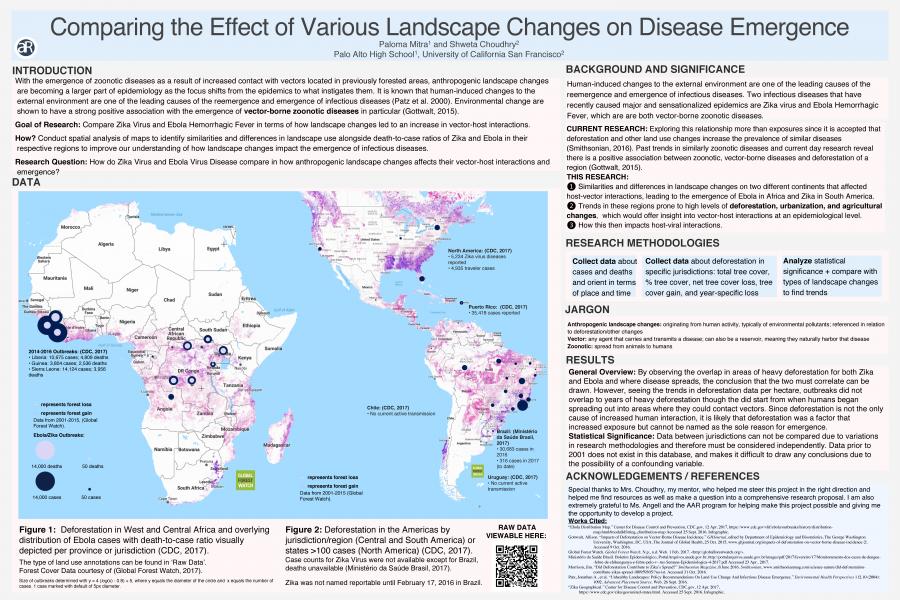Summary
With the emergence of zoonotic diseases as a result of increased contact with vectors located in previously forested areas, anthropogenic landscape changes are becoming a larger part of epidemiology as the focus shifts from the epidemics themselves to what causes these epidemics. The goal of this research is to compare two recent and notable epidemics: Zika Virus and Ebola Hemorrhagic Fever, by how human-induced landscape changes such as deforestation and urbanization have increased vector-host interactions for each respective disease. Hopefully understanding how environmental changes affect these infectious diseases can help with finding potential prevention methods and improve public health.

